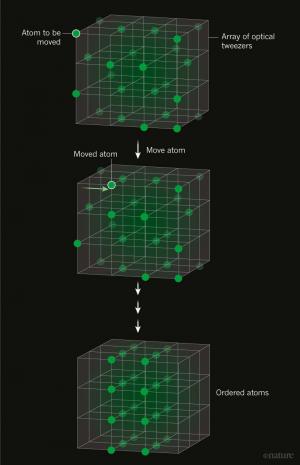
Breaking News
 Interview 1993 – Iain Davis Exposes the Technocratic Dark State
Interview 1993 – Iain Davis Exposes the Technocratic Dark State
 Get Ready! Something Big is Coming and They're Putting all The Pieces in Place | Redacted News
Get Ready! Something Big is Coming and They're Putting all The Pieces in Place | Redacted News
 Here we go! This is about to get very UGLY
Here we go! This is about to get very UGLY
We Americans Need to Dig Deep into Historical Perspective
Top Tech News
 This tiny dev board is packed with features for ambitious makers
This tiny dev board is packed with features for ambitious makers
 Scientists Discover Gel to Regrow Tooth Enamel
Scientists Discover Gel to Regrow Tooth Enamel
 Vitamin C and Dandelion Root Killing Cancer Cells -- as Former CDC Director Calls for COVID-19...
Vitamin C and Dandelion Root Killing Cancer Cells -- as Former CDC Director Calls for COVID-19...
 Galactic Brain: US firm plans space-based data centers, power grid to challenge China
Galactic Brain: US firm plans space-based data centers, power grid to challenge China
 A microbial cleanup for glyphosate just earned a patent. Here's why that matters
A microbial cleanup for glyphosate just earned a patent. Here's why that matters
 Japan Breaks Internet Speed Record with 5 Million Times Faster Data Transfer
Japan Breaks Internet Speed Record with 5 Million Times Faster Data Transfer
 Advanced Propulsion Resources Part 1 of 2
Advanced Propulsion Resources Part 1 of 2
 PulsarFusion a forward-thinking UK aerospace company, is pushing the boundaries of space travel...
PulsarFusion a forward-thinking UK aerospace company, is pushing the boundaries of space travel...
 Dinky little laser box throws big-screen entertainment from inches away
Dinky little laser box throws big-screen entertainment from inches away
 'World's first' sodium-ion flashlight shines bright even at -40 ºF
'World's first' sodium-ion flashlight shines bright even at -40 ºF
Sorting atoms into 3D patterns to enable neutral atom quantum computers

Barredo and team report their use of precision optical-engineering methods to sort atoms into arbitrary 3D patterns.
Barredo et al. extend their previously reported method for 2D atom sorting to three dimensions. Their approach to disorder and sorting is different from Kumar and colleagues' method, but just as effective. They use a holographic technique whereby a laser beam is reflected off a spatial light modulator and then focused to form traps known as optical tweezers. In this way, they generate arrays of traps in arbitrary configurations that can be loaded with up to 72 cold rubidium atoms. To remove disorder and build the desired atomic configuration, the authors use a separate, movable optical tweezer to pluck atoms from 'wrong' traps and either move them to correct sites or discard them. This allows them to build qubit arrays in standard grid patterns, in topologies such as a Möbius strip, and even in the shape of the Eiffel Tower.



